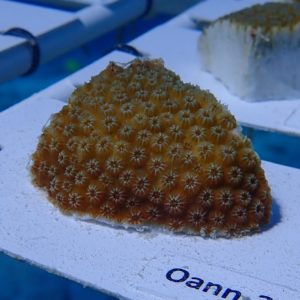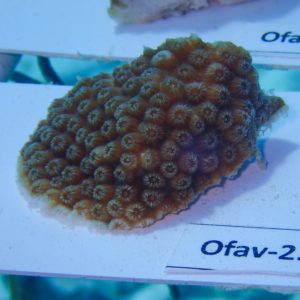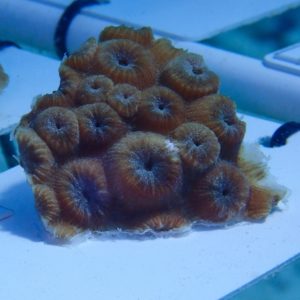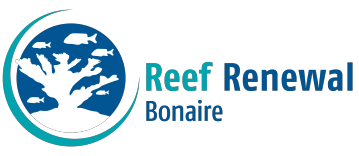For the first time ever, RRFB has outplanted 3 species of boulder coral back to Bonaire’s reefs: lobed star coral (Orbicella annularis), mountainous star coral (Orbicella faveolata), and great star coral (Montastraea cavernosa). In late 2022, we began outplanting boulder coral fragments that were propagated via fragmentation almost 2 years prior and reared in nurseries. All 3 species of boulder coral, 2 of which are endangered, are key building blocks of the marine ecosystem and will bolster the resilience of Bonaire’s reefs for years to come!
Why Diversify the Species We Propagate and Outplant?
At our inception in 2012, RRFB initially focused on 2 species of branching coral: staghorn coral (Acropora cervicornis) and elkhorn coral (Acropora palmata). We have since expanded our restoration efforts to target boulder coral, as well, first through our larval propagation program and now through fragmentation. It’s crucial to maximize the number species that benefit from restoration to ensure that future reefs are as genetically diverse and resilient as possible!

Lobed Star Coral
Orbicella annularis
IUCN Status: Endangered
Depth range: 0 – 80 m
# Genotypes in our nurseries:12

Mountainous Star Coral
Orbicella faveolata
IUCN Status: Endangered
Depth range: 10 – 40 m
# Genotypes in our nurseries: 12

Great Star Coral
Montastraea cavernosa
IUCN Status: Least Concern
Depth range: 12-30 m
# Genotypes in our nurseries: 12
From Nursery to Reef
In 2019, Reef Renewal Foundation Bonaire, with a government permit and input from STINAPA, collected just a few boulder coral fragments from four wild colonies around the island. These fragments were hung on specially-designed nursery trees and closely monitored for indicators of disease, bleaching, and other stressors over the following 2 years.
In December 2022, the first “reef-ready” boulder corals were taken to various restoration sites on Bonaire and outplanted using a novel, cement-based attachment technique. Fragments are pressed into small domes of fresh cement and secured to sand or rock; once hardened, these structures become part of the reef, where they will be monitored for the coming years by the Reef Renewal team. Although RRFB has been propagating boulder coral larvae for years, this is the first time that colonies were reared and fragmented in a nursery setting before being outplanted.
Photo by RRFB
“Outplanting these boulder coral fragments for the first time was a critical step for us, one that was necessary to fine-tune our restoration techniques and establish proper operating protocols. From now on, our focus is scaling up their production to make sure that, with the help of our incredible community of dedicated volunteers, thousands of corals will be outplanted back to our reefs every year.”
– Francesca Virdis, Chief Operating Officer | Reef Renewal Foundation Bonaire
The Cement-based Outplanting Technique
Unlike branching corals (staghorn and elkhorn), boulder corals cannot be outplanted using bamboo structures or the wedging technique. To secure boulder coral fragments to the reef, we use an innovate, cement-based outplanting technique:
- Cement is mixed on land and placed into dome-shaped containers
- The cement containers are brought to the restoration site, where boulder coral fragments from the nursery are waiting to be outplanted
- Once a suitable spot on the reef is identified and cleared of algae, the partially-dry cement dome is molded to the substrate and labeled with a tag indicating species and genotype
- Fragments of O annularis, O. faveolata, or M. cavernosa are pressed into the top of the dome, where they will continue growing and fuse together until the cement base is eventually concealed
- The overall health and susceptibility of each outplanted colony will be monitored for years to come by the RRFB team!
Looking Forward
Reef Renewal Bonaire will continue to grow and propagate boulder corals in nurseries and outplant them back to the reef. The Foundation’s efforts guarantee that O. annularis, O. faveolata, and M. cavernosa, staples of Bonaire’s marine ecosystem, will continue to thrive amidst growing pressures.
The boulder coral project is important not only for the preservation of key species, but also for ensuring the resilience of Bonaire’s reefs in the face of growing local and global threats. By expanding the quantity and species of coral they outplant, the Foundation introduces much needed diversity to degraded reef areas, allowing them to better withstand today’s ever-changing environment and the uncertain conditions of the future.







